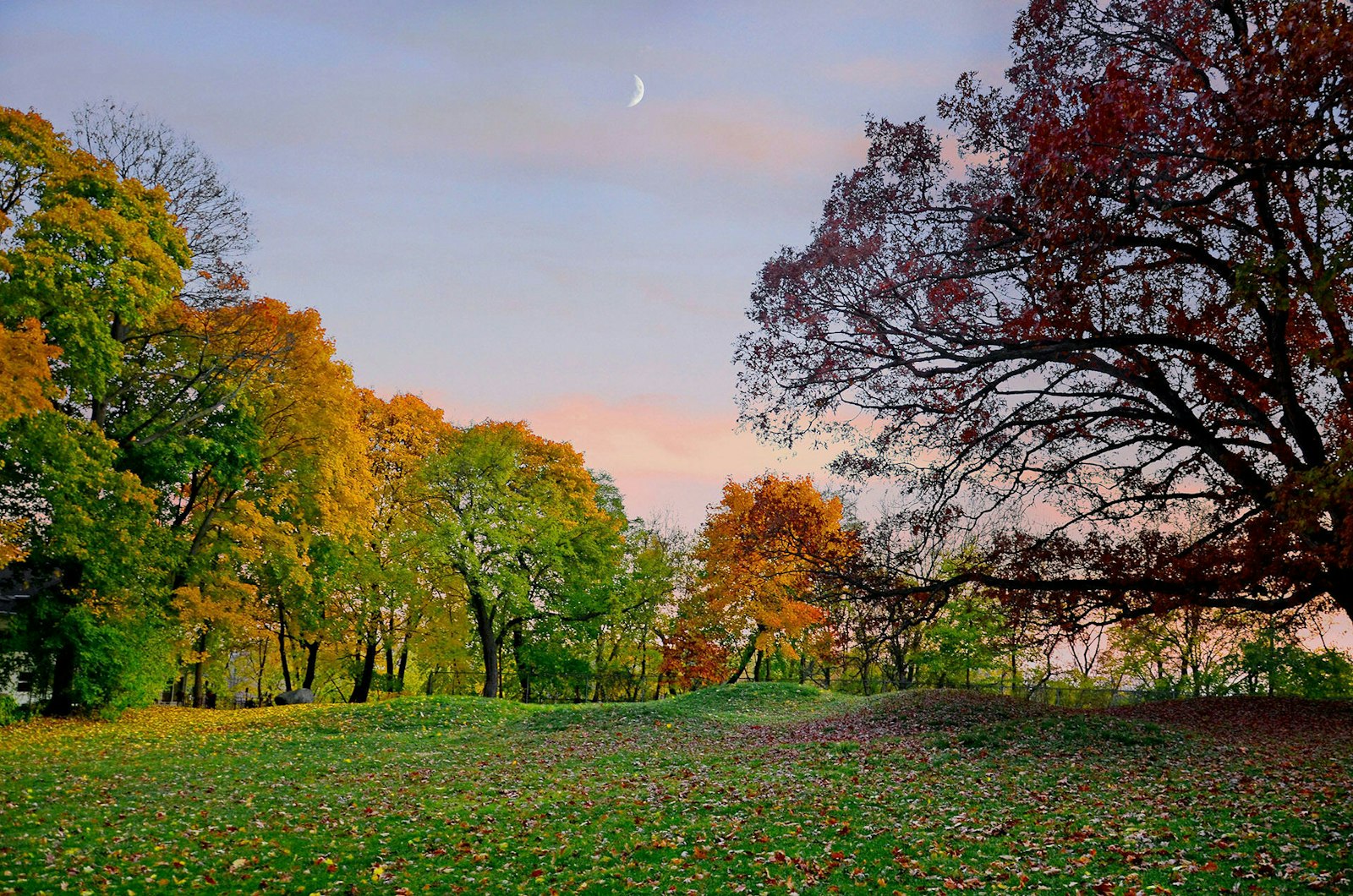
Effigy Mounds National Monument
The secretive mounds culture of the Eastern Woodland people is one of the many mysteries of the national parks.
An Effigy Mound American Indian culture developed over 1,000 years ago placing thousands of earthen mounds across the landscape of what (today) includes parts of Iowa, Wisconsin, Minnesota and Illinois.
The monument contains nationally significant archeological resources including (original) surviving examples of earthen American Indian mound groups that provide an insight into the social, ceremonial, political, and economic life of the Eastern Woodland people. Two hundred and six pre-European contact mounds are preserved here—of which 31 are effigies in the shape of bears and birds. Natural features in the monument include forests, tallgrass prairies, wetlands, and rivers. As a sacred site to the modern descendants of the moundbuilders, park access is offered via fourteen miles of hiking trails.
Eastern Woodland Indians built mounds from about 500 BC until the early European contact period. A unique Effigy Mound culture developed in this area of the Upper Midwest placing thousands of mounds in the shape of animals across the landscape. Others are conical, linear, or compound shapes; many of the conical are burial mounds. Some effigy mound groups were built to a monumental scale; the Marching Bear Group, containing 10 bear and three bird effigies, stretches nearly one quarter mile along a bluff top overlooking the Upper Mississippi River.